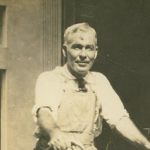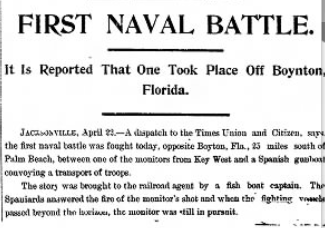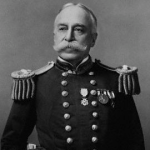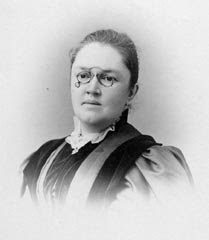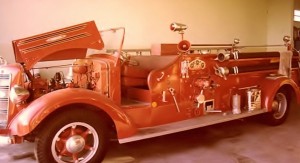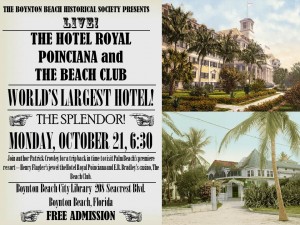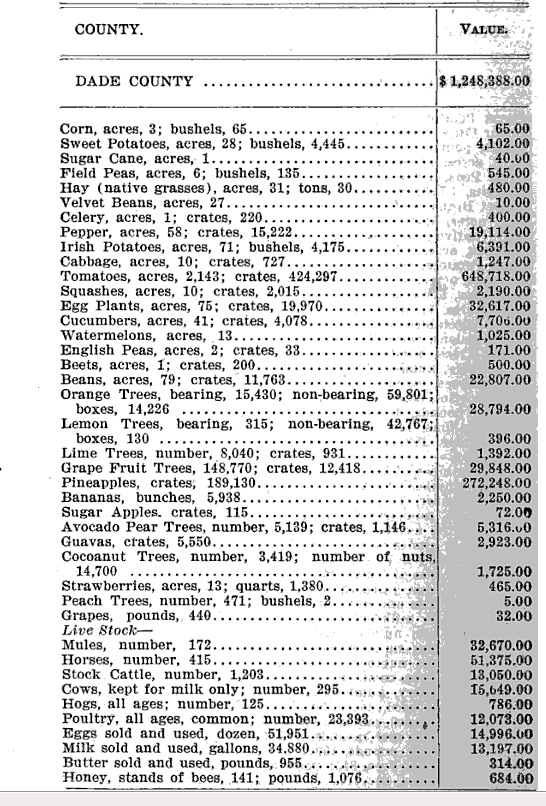Most people have heard of the Spanish-American War – Teddy Roosevelt’s Rough Riders charging up San Juan Hill, the sinking of the Maine in Havana’s harbor, or Admiral George Dewey’s victory in Manila. But if the earliest accounts of the Spanish-American war are correct, the first naval battle was fought offshore of a tiny town called Boynton.
Reports surfaced on April 22, 1898 that George Lyman, of the Lantana-founding Lyman family, had been fishing in Lake Worth when he heard the heavy fire of guns at about 10 in the morning. He ran to the beach and saw a United States monitor chasing a
Spanish man-of-war that was guarding a coal ship, probably on the way to Havana. He said that all the ships were traveling “with a bone in their teeth,” meaning they were traveling at top speed. He watched the battle for an hour before rushing to the railroad agent in Boynton, who wrote the dispatch to the Florida Times-Union in Jacksonville. Spain declared war on April 23, with the United States following suit on April 25, 1898.
Newspapers around the nation carried the report. Even the New York Times wrote up the story under the headline “A Fisherman’s Yarn.” George Lyman was portrayed as a
 “reliable man,” but the New York Times couldn’t find Boynton on a map: “The name Boynton does not appear in the Gazetteers, nor in the list of the Post Offices of the United States. There exist, however, a number of clusters of fisherman’s houses in the vicinity of Palm Beach, which may include the village referred to.”
“reliable man,” but the New York Times couldn’t find Boynton on a map: “The name Boynton does not appear in the Gazetteers, nor in the list of the Post Offices of the United States. There exist, however, a number of clusters of fisherman’s houses in the vicinity of Palm Beach, which may include the village referred to.”
It is ironic that the plat for Boynton would be filed later in 1898 by Fred S. Dewey and Byrd Spilman Dewey, and the most well-known hero of the war would be Admiral
George Dewey, a distant cousin of Fred’s, who became known as “the hero of Manila.”
Beyond the newspaper accounts of April 1898, there is no other mention I can find of the skirmish that occurred off of Boynton. But it put the little hamlet’s name across the nation for its first 15 minutes of fame. The Spanish-American War lasted but three months, and the lore of the first battle was lost to time.

